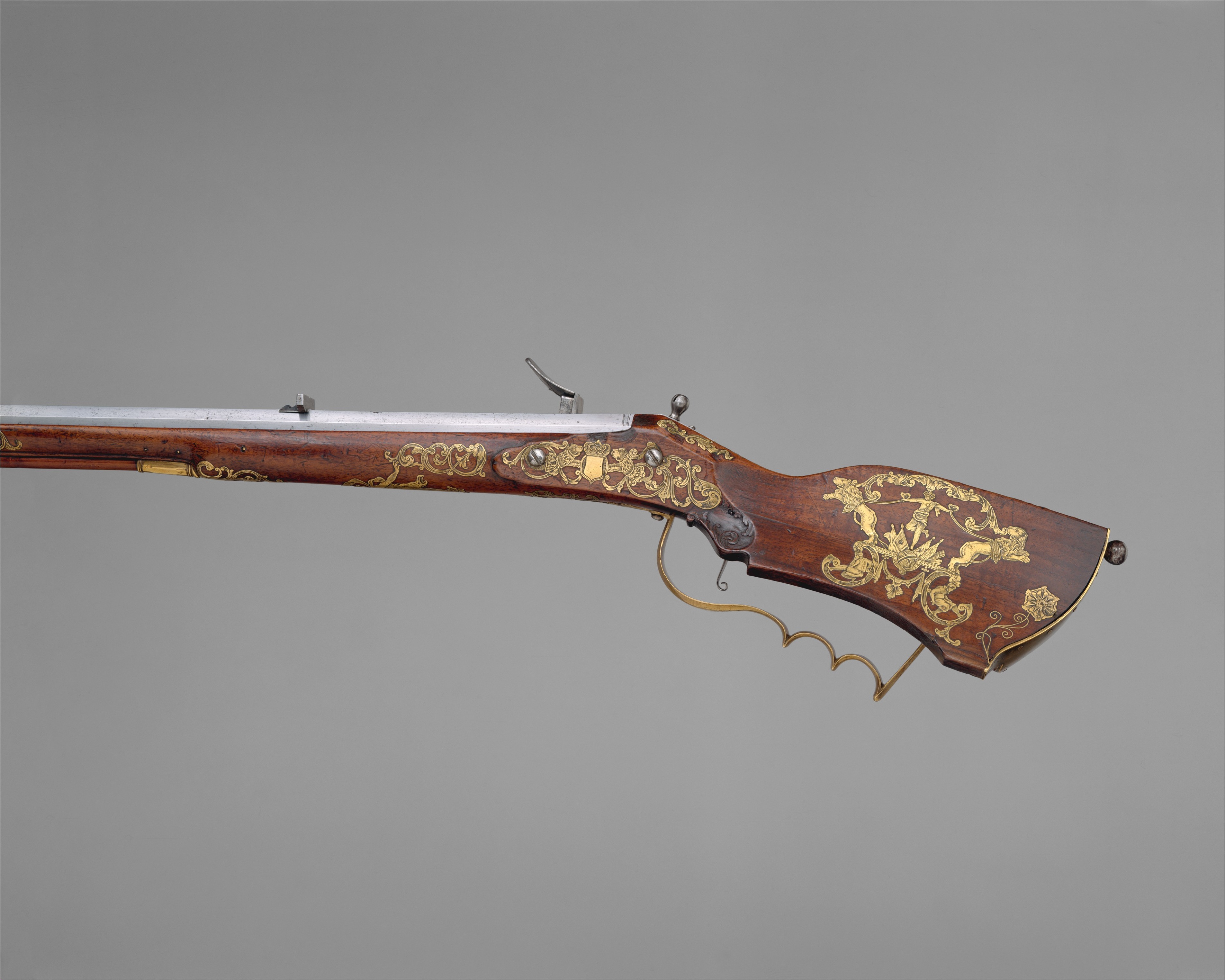Snaphaunce Hunting Rifle
Signed by Jonas Schertiger the Younger Swedish
This rifle exemplifies the diverse influences shaping firearms design in eighteenth-century Sweden. Its slender proportions and small-caliber barrel are modeled after the Silesian Tschinke rifle; the prominent cheek stock is typically German, as is the use of inset brass decoration, yet the flat-faced lock copies French models. The lock mechanism, however, is unmistakably Swedish, as the snaphaunce lock was favored in Scandinavia over the wheellock and flintlock commonly used on the Continent. A gunstocker by trade, Jonas Schertiger the Younger was a member of the Stockholm cabinetmakers' guild. His name and the date of manufacture are prominently engraved on the brass inlay on the cheek stock. A blank escutcheon surmounted by a royal crown on the sideplate suggests that this gun was intended for the hunting cabinet of King Frederick I of Sweden (reigned 1720–51).
Due to rights restrictions, this image cannot be enlarged, viewed at full screen, or downloaded.
This artwork is meant to be viewed from right to left. Scroll left to view more.





